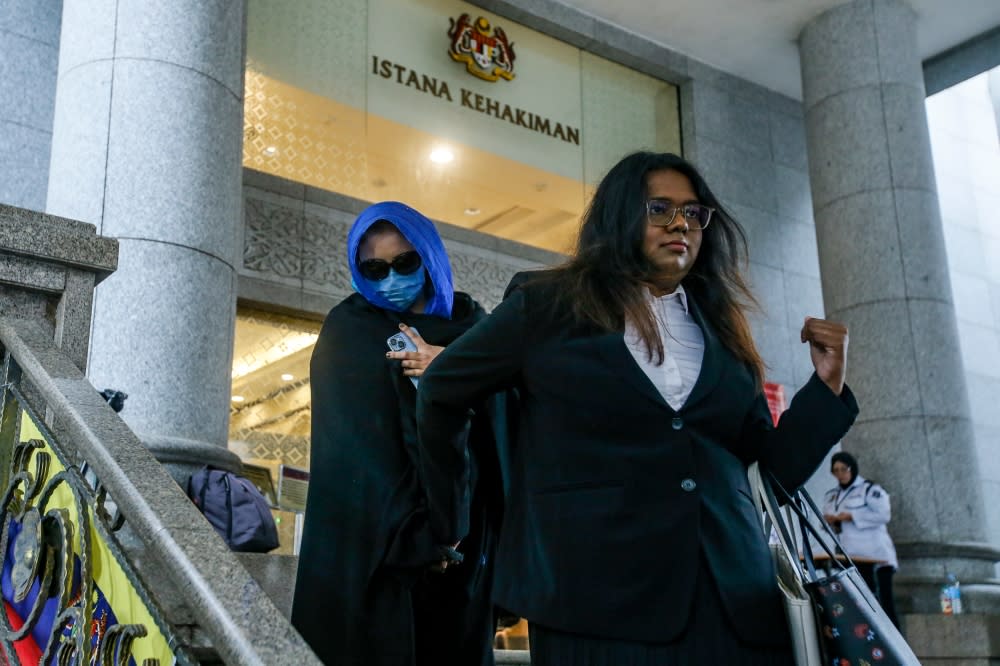Appellate court rejects prosecution’s appeal to reverse acquittal of Samirah, two teens in Cradle Fund CEO murder case

KUALA LUMPUR, Feb 8 ― The Court of Appeal (CoA) has today rejected the prosecution's appeal against the acquittal of Samirah Muzaffar and two teenagers on a charge of murdering Cradle Fund chief executive officer (CEO) Nazrin Hassan.
The three-member bench comprising Justices Datuk Vazeer Alam Mydin Meera, Datuk Ahmad Zaidi Ibrahim, and Datuk Azhahari Kamal Ramli delivered their verdict as Samirah and one teenager attended court, while another attended via online meeting platform Zoom.
“We feel the prosecution has failed to prove a proper prima facie case in this matter and as such the appeal is dismissed and the order of the High Court is affirmed albeit for reasons different from the High Court,” Judge Vazeer said.
“This is a unanimous decision and these are the broad grounds for it, the full grounds will be released in due course,” he added.
He said the prosecution's case was entirely based on circumstantial evidence, relying on the “last seen” theory which states that when an accused is last seen with the deceased in the absence of any plausible explanation it could lead to a presumption of guilt.
Without any proper evidence, he said the prosecution cannot use the last seen theory and there must be something establishing the accused with the crime as mere non-explanation on the part of the accused cannot be proof of guilt.
He said this was not sufficient evidence to determine the guilt of the accused: “There must be something more and the mere fact they were last seen in the house was by itself not sufficient to connect the respondents to the death of the deceased,” he said.
“We've also combed the evidence for motive and found none. In fact the learned DPP considered the prosecution didn't tender any cogent evidence of motive on the part of the respondents to kill the deceased. The alleged financial motive, intent to divorce and the deceased's alleged bad relationship with the second and third respondents relied on by the prosecution to show some element of motive was also unclear and ambiguous. The prosecution themselves admitted the motives were vague and unclear.
“For court to rely on motive as strand of circumstantial evidence it must be satisfactorily proven based on clear and credible evidence, it cannot be vague, non-existent or unclear,” he said.
Lawyer Tan Sri Muhammad Shafee Abdullah, representing Samirah and the two teenagers, completed his submission on October 23 last year, while the prosecution led by Deputy Public Prosecutor Datuk Yusaini Amer Abdul Karim completed their submission on October 17.
On June 21, 2022, the Shah Alam High Court freed Samirah, 49, who is also Nazrin's widow, and two teenagers, now 21 and 18, of murdering Nazrin after finding that the prosecution had failed to establish a prima facie case against the three of them at the end of its case.
The three of them and an Indonesian woman, Eka Wahyu Lestari, who is still at large, were charged with killing Nazrin, 45, at his house in Mutiara Damansara between 11.30pm on June 13, 2018, and 4am the following day.
Judge Vazeer said that using Eka as a suspect was also not sufficient and chided the authorities for not making a concerted effort to locate her despite her being in Sarawak.
“The fatal flaw in the prosecution case was one of the main persons they alleged was sent away to hide the crime was in fact in Sarawak working in a kopitiam. A mere check on Facebook showed her whereabouts.
“The police never arrested her to bring her to court, the police didn't do a thorough job and they admitted that they weren't serious in pursuing her. So to say Eka was at large and is responsible for the crime was misleading,” he added.
On June 30, 2022, Samirah and the teenagers filed an appeal to challenge certain findings of fact by the High Court, including the finding that the fire which broke out in Nazrin's room was “done deliberately”.
The panel agreed that there also wasn't sufficient evidence to prove the fire was deliberately done as there was contradicting evidence from the Chemical Department of Malaysia and the Fire and Rescue Department's investigators.
The judge also said that the testimony surrounding the petrol and the analysis done on it were not using certified methods and the investigators had skipped crucial steps needed for the analysis of the petrol.



